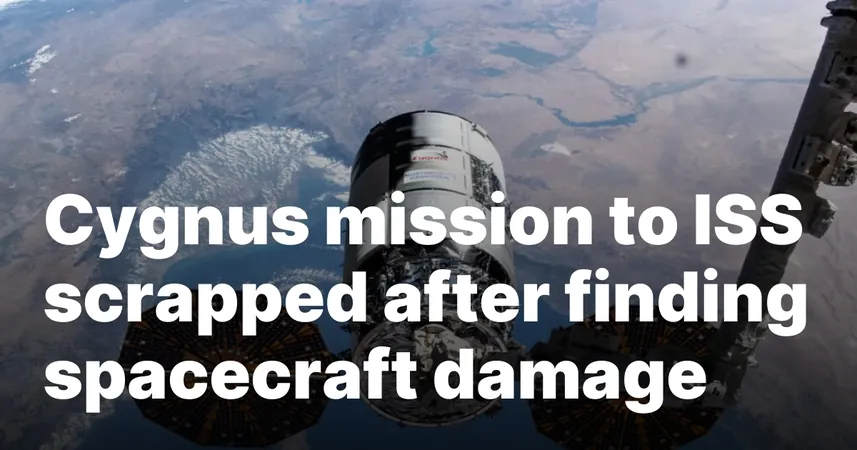
Cygnus Cargo Mission to ISS Canceled Due to Spacecraft Damage – What This Means for Future Launches!
2025-03-27
Author: Chun
Introduction
In a significant setback for NASA and Northrop Grumman, the planned Cygnus cargo mission to the International Space Station (ISS) is now off the table for June following the discovery of damage to the spacecraft. This revelation has raised concerns over the timeline for upcoming resupply missions to the ISS.
Details of the Incident
On March 26, NASA officially announced that the Pressurized Cargo Module intended for the NG-22 mission has been deemed unusable due to damage sustained while in transit from its supplier. This incident was characterized by Northrop Grumman's spokesman, Dan Leone, as a 'commercial shipping accident.' The next mission, NG-23, is tentatively planned for later this fall, with NASA and Northrop Grumman now focusing on expediting the hardware needed for it.
Challenges Faced by NASA
Dana Weigel, NASA's ISS program manager, highlighted the challenges posed by shifting flight schedules. The NG-22 mission had already been delayed from February due to an avionics issue that was not widely communicated. With the cancellation of the NG-22 mission, adjustments were necessary for the upcoming Dragon mission, SpX-32, which is scheduled for launch no earlier than April 21. NASA will replace certain scientific investigations with necessary crew supplies to ensure the astronauts aboard the ISS have sufficient sustenance.
Impact on Scientific Research
While NASA has not divulged specific details about how much research material will be displaced on the SpX-32 mission, previous cargo missions underscore the importance of balancing crew supplies and scientific research payloads. For example, the earlier missions, such as SpX-31 and SpX-30, carried significant quantities of both crew supplies and scientific investigations, totaling nearly two tons combined.
Future of Cargo Transportation
Beyond Northrop Grumman's challenges, the cargo transportation landscape is evolving. Sierra Space is gearing up for future flights with its Dream Chaser vehicle, anticipated to launch by the end of the summer. Simultaneously, Japan's space agency, JAXA, is readying its updated HTV-X cargo vehicle, aiming for a launch in the fall.
Conclusion
As both Northrop Grumman and SpaceX continue their long-standing partnership with NASA, which began in 2008, the challenges presented by these recent setbacks could have broader implications for international collaboration in low Earth orbit and scientific exploration. With the clock ticking, NASA and its partners must navigate these complexities rapidly to ensure that the ISS remains stocked with the essentials for its crew. The next few months will be crucial in determining how the agency adapts to these logistical hurdles and whether science can continue to flourish in orbit despite these unexpected disruptions. Stay tuned for updates on the situation—it's a vital topic not just for space enthusiasts, but for the future of scientific research beyond our planet!


 Brasil (PT)
Brasil (PT)
 Canada (EN)
Canada (EN)
 Chile (ES)
Chile (ES)
 Česko (CS)
Česko (CS)
 대한민국 (KO)
대한민국 (KO)
 España (ES)
España (ES)
 France (FR)
France (FR)
 Hong Kong (EN)
Hong Kong (EN)
 Italia (IT)
Italia (IT)
 日本 (JA)
日本 (JA)
 Magyarország (HU)
Magyarország (HU)
 Norge (NO)
Norge (NO)
 Polska (PL)
Polska (PL)
 Schweiz (DE)
Schweiz (DE)
 Singapore (EN)
Singapore (EN)
 Sverige (SV)
Sverige (SV)
 Suomi (FI)
Suomi (FI)
 Türkiye (TR)
Türkiye (TR)
 الإمارات العربية المتحدة (AR)
الإمارات العربية المتحدة (AR)